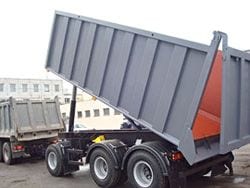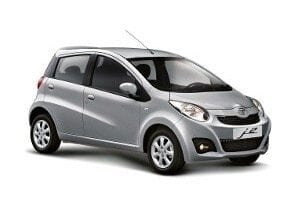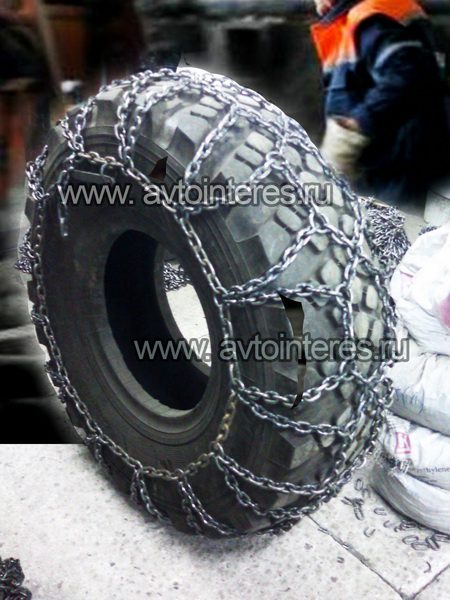
Snow chain: everything you need to know!
Content
Snow chains are used to increase tire grip on snowy roads. They are mandatory on certain roads and required under certain weather conditions. Winter socks are an alternative to chains. On the other hand, winter or winter tires are absolutely no substitute for chains.
🚗 What is a snow chain?
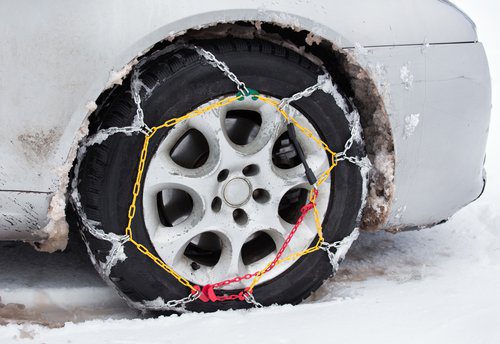
. snow chains are chains that fit over your car's tires to increase traction when driving on heavily snowy roads. They are made of metal and therefore can withstand very heavy loads without problems.
Snow chains wrap around your tires and adapt to your wheels. Assembling chains is often a pet peeve of motorists: installing them requires a little preparation before getting stuck while installing them!
Installing the chains is very important for your safety because if you don't do it correctly, the chains can come loose from the tires and thus lead to loss of traction.
If Winter tires Designed for better grip on snowy or icy roads, thick layers of snow can block you despite these tires. Therefore, snow chains are often necessary in winter, especially if you live in cold regions or are driving to the mountains.
Snow chains are even a must on some roads, especially when driving to ski resorts. To find out if it is compulsory to use snow chains, eat Panel B26... Mandatory if fitted with a snow chain.
On the other hand, when you are no longer driving on snowy roads, you must remember to remove your snow chains, because they are not designed for driving on paved roads. You risk damaging your wheels! Please also note that when riding with snow chains, the speed cannot exceed 50 km / h.
🔍 How to choose snow chains?

There are different sizes of snow chains to fit your wheel size. The shape of the chain will also determine your vehicle's grip and handling. There are two types of snow chains:
- Hand-tensioned chains : they are a little more difficult to assemble, but they are the most economical solution;
- Self-tensioning chains, much easier to assemble, but more expensive.
So your choice depends on your use (extreme conditions or not, regular or casual use), your budget, the size of your tires, and your mechanical skills in fitting chains to your tires.
Good to know : Most vehicles can be equipped with snow chains. However, some vehicles will require more specific snow chains because the wheel arch is too narrow to accommodate conventional snow chains. Be sure to read your vehicle manual before purchasing snow chains.
🔧 How to install snow chains?
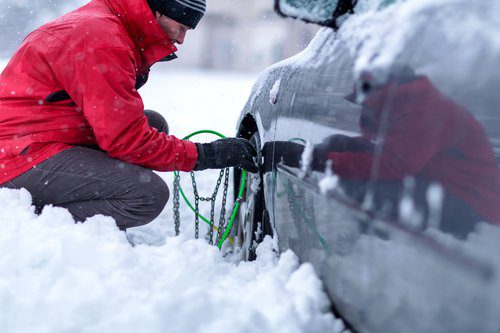
Have you planned a ski vacation and bought snow chains but still don't know how to put them on? Don't panic, we will explain everything to you in this detailed guide! Do not forget to train in advance, it will save you valuable time when you visit the mountains.
Required material:
- gloves
- Snow chains
- Hook tensioner (optional)
Step 1. Find out where the drive wheels of your vehicle are.

Snow chains are fitted to the front wheels if you have a front wheel drive vehicle, and to the rear wheels if you have a rear wheel drive. It is not necessary to ride with snow chains on all wheels of your vehicle, except for, for example, 4 × 4 vehicles.
Step 2. Find a safe place

When installing snow chains, make sure you are in a safe place, avoid the edges of the road and, for example, prefer parking.
Step 3: put the chains on the floor

Start by unfolding the chains and make sure they are properly untangled. We advise you to do this before traveling, it will save you valuable time when installing chains.
Step 4. Place the chains on top of the bar.
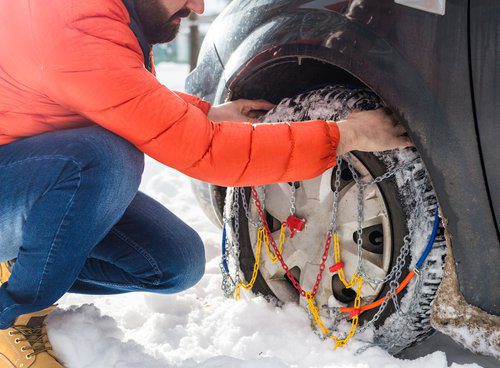
First of all, make sure your car is stationary and the handbrake is on. Now place the chain on top of the bar like a circular arc. Let it hang down three quarters. Then place the end of the chain under the bar.
Step 5. Move forward

Now push forward a little so that the chain can go all the way under the bar and the two ends of the chain can be joined. Once this step is completed, stop the machine and apply the handbrake again.
Step 6: connect the chains
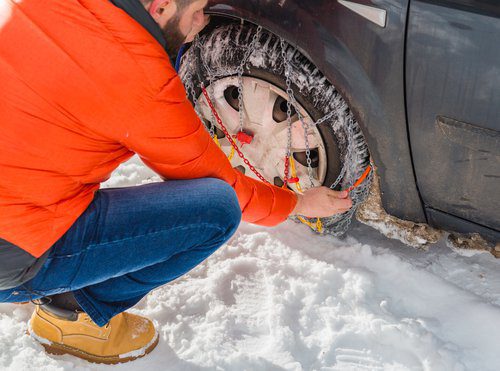
Now you need to connect the two ends of the chain. To do this, connect the hooks on both sides of the tire to each other, starting from the inside of the tire. To tighten the chains, you can arm yourself with a tensioner hook.
Always check that the connections are correctly aligned, otherwise you will have to start over. Once you finish the wheel, do the same for the other wheels in your car.
Step 7. Drive a few meters

Drive about 500 yards to allow the chains to move slightly and tighten them evenly so that they fit snugly. Your chains are now assembled!
⛓️ What are the alternatives to snow chains?
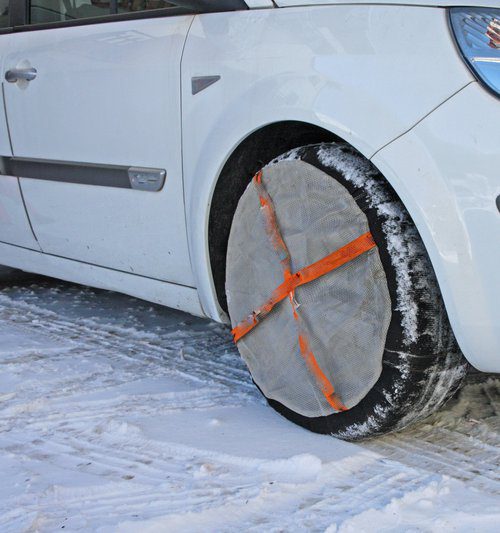
Snow tire or chain?
Is it worth buying Winter tires or the snow chains that my car is equipped with? Winter tires are special tires that are recommended for use at temperatures below 7 degrees. The main advantages of winter tires:
- One better grip on snowy or icy ground;
- One reduction of your braking distances ;
- One reduced risk of slipping and skid.
On the other hand, if you choose winter tires, you must be equipped with winter tires and summer tires and therefore go to the garage when you need to replace them, or, in any case, have a storage space for them. Keep them between changing seasons.
Good to know: now there are hybrid tires that can be worn all year round: this 4 season tires... They are on average 30% more expensive than conventional tires, but you don't have to change them. They are effective unless you are driving in extreme conditions, but they will never be as effective as winter tires.
Winter tires and chains do not contradict each other, on the contrary. Firstly, winter tires will not be enough for driving in extreme conditions and on thick layers of snow. You will have no choice but to put on the chains.
In addition, winter tires are not designed for snowy roads. It is recommended to install winter tires as soon as the temperature drops. below 7 degreesbecause they are made of rubber that does not harden in cold weather, unlike summer tires.
This way, you really don't have to choose between winter tires and chains. Wear winter tires for the entire winter season, from about October to March. Also, install snow chains where you need them and on roads with significant snow.
Snow chain or sock?
. snow socks a real alternative to chains. The snow socks are made of a non-slip fabric suitable for hanging in the snow and polyester fibers that absorb water and therefore highlight the need to care for your vehicle on the road.
As the name suggests, winter socks slide right onto your wheel. Their main advantages are ease of use and low price (count around thirty euros for entry-level winter socks).
If you opt for winter socks, you will also notice that they are much lighter than chains and therefore much quieter. This will increase your driving comfort. However, winter socks are recommended only on roads with little snow and for occasional use.
Before purchasing winter socks, make sure they are approved for use on mandatory toe or snow roads marked with the B26 sign.
💰 How much do snow chains cost?

The price of snow chains varies greatly and depends on the model of your vehicle, the model of your tires and the brand of snow chains you choose. On average it takes from 50 € for entry-level models and up to 250 euros for more expensive models.
Now you know everything about snow chains! As you can imagine, they are indispensable equipment for motorists who may collide with roads with heavy snowfall. Before going to winter sports, you should have a pair of snow chains in your car. trunk.
